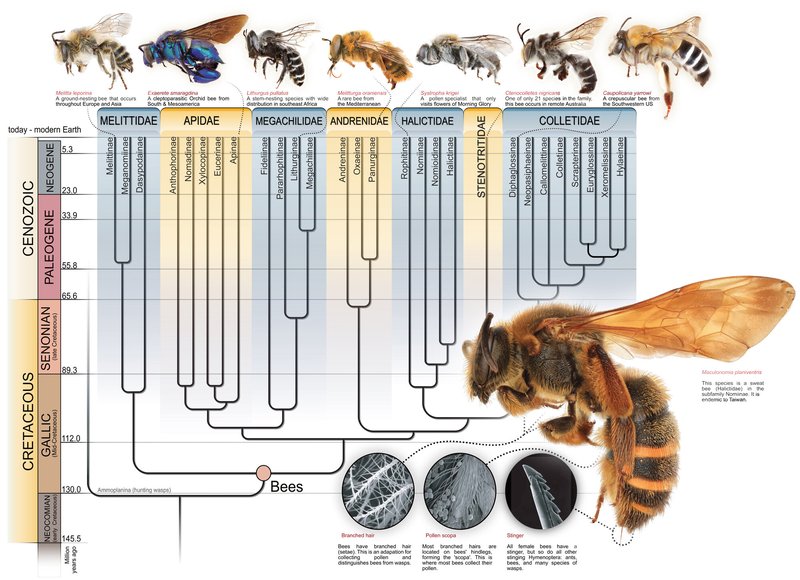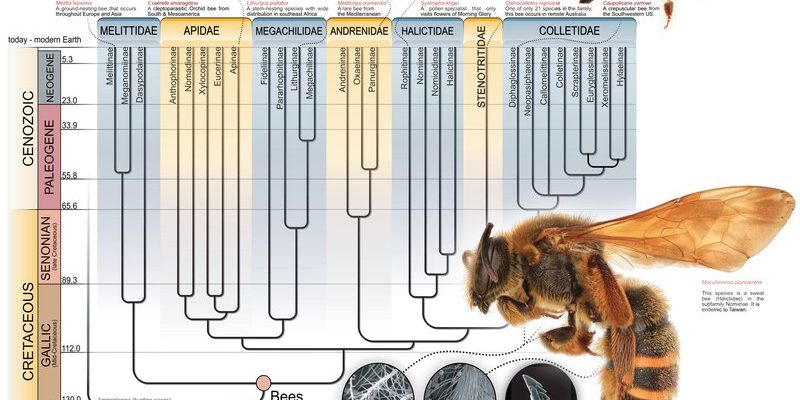
Imagine bumblebees as the little workhorses of the garden, tirelessly moving from bloom to bloom, and playing a crucial role in our ecosystem. They’re not just cute—these buzzing buddies have a history that intertwines with the very plants we depend on for food. So grab a cup of coffee and let’s dive into the incredible journey of bumblebees, from their ancient ancestors to their present-day importance.
What Are Bumblebees?
Bumblebees belong to the genus *Bombus*, which includes over 250 species worldwide. They’re easily recognizable by their stout bodies covered in fuzzy hair, usually colored black and yellow. These social insects live in colonies, which can range from 50 to 400 bees, depending on the species.
Here’s the thing: bumblebees are fascinating not just for their appearance but also for their behavior. They have a unique way of pollinating flowers known as “buzz pollination.” This technique involves the bee vibrating its body to release pollen, making them incredibly effective at pollinating certain types of plants. This is particularly important for crops like tomatoes and blueberries, where bumblebees excel.
You might be wondering about the difference between bumblebees and honeybees. While both are essential pollinators, bumblebees tend to be larger, hairier, and can even forage in cooler temperatures. This makes them vital for early spring blooms when other pollinators are still dormant.
The Early Beginnings of Bumblebees
Bumblebees have a long history that dates back over 40 million years. They evolved during the late Eocene epoch, a time when the Earth was experiencing significant climate changes. This period saw the emergence of many plants that are still crucial today, and bumblebees were right there, adapting to these new environments.
In the beginning, bumblebees likely resembled their solitary relatives. Over time, they developed social behaviors that allowed them to thrive in colonies. This shift was a game changer, as working together meant they could forage more effectively and protect their nests from predators.
You might compare this evolution to how modern humans have developed communities to improve survival. Just as we rely on each other for everything from sharing food to mutual protection, bumblebees benefit from living and working together.
How Bumblebees Adapted to Their Environment
As bumblebees evolved, they became specialized pollinators, adapting their behaviors and physical traits to suit various plants. One of the most notable adaptations is their ability to fly in cooler temperatures. Unlike honeybees, bumblebees can maintain body heat, allowing them to forage when other insects simply can’t.
Their fuzzy bodies aren’t just for show; they help collect pollen and retain warmth. This adaptation is particularly advantageous in early spring when bumblebees emerge from hibernation and flowers begin to bloom, providing them with some of the few food sources available.
Moreover, bumblebees have developed a variety of foraging strategies. They’re known for being “generalists,” meaning they collect food from a wide range of flowers, which is essential for their survival. This flexibility helps them thrive in diverse environments, from gardens to wildflower fields.
The Role of Bumblebees in Our Ecosystem
Bumblebees play a crucial role in maintaining healthy ecosystems. They’re responsible for pollinating many of the plants that produce fruits, vegetables, and nuts. This is vital not just for the plants themselves but also for the animals and humans that rely on those plants for food.
Think of it this way: without bumblebees, many of our favorite foods would disappear. Apples, blueberries, peppers, and even almonds are just a few examples of crops that benefit from bumblebee pollination. In fact, studies show that bumblebee pollination can increase fruit size and yield, making them indispensable to agriculture.
Their impact goes beyond food production, though. By pollinating various plants, bumblebees help sustain entire ecosystems. Healthy plant life supports local wildlife, creating a rich web of life that benefits many species, including humans.
Threats to Bumblebee Populations
Unfortunately, bumblebee populations have been declining in recent years due to several factors. Habitat loss, climate change, pesticide use, and disease are all contributing to this worrying trend. As urban areas expand and natural habitats shrink, bumblebees struggle to find suitable nesting sites and food sources.
Climate change also affects their foraging patterns. As temperatures rise, flowers bloom earlier or later than normal, disrupting the synchronicity between bumblebees and their food sources. This can lead to food shortages and struggling populations.
Additionally, pesticide exposure can be lethal for bumblebees. Chemicals designed to protect crops can harm these beneficial insects, leading to colony collapses. As responsible stewards of the environment, it’s important for us to consider how our actions impact these vital pollinators.
Conservation Efforts for Bumblebees
Luckily, there are many ongoing conservation efforts aimed at protecting bumblebee populations. Community programs and organizations are working to restore habitats, create pollinator gardens, and educate the public about the importance of bumblebees.
One simple way to help is by planting native flowers that provide food for bumblebees. By creating a buzz-friendly garden, you can support local bumblebee populations and ensure that these critters have access to the resources they need to thrive.
Additionally, advocating for reduced pesticide use and supporting organic farming practices can also make a difference. Every small action can contribute to the larger goal of bumblebee conservation.
While it might seem overwhelming, you’d be surprised at how even little changes can have a big impact on the health of our planet’s ecosystems.
The Future of Bumblebees
The future of bumblebees depends on the collective efforts of individuals, communities, and policymakers. We need to continue raising awareness about their importance and the challenges they face. As we learn more about these fascinating creatures, we can find innovative ways to support them.
It’s a bit like encouraging a friend who’s struggling; sometimes, just showing up and being supportive can make all the difference. By engaging with local initiatives, participating in conservation efforts, or simply planting a bee-friendly garden, we can all contribute to the survival of bumblebees.
Honestly, it’s inspiring to consider how much we can do to help these busy little pollinators thrive. By understanding their history and evolution, we can appreciate the roles they play in our lives and commit to protecting them for future generations.
In conclusion, the story of bumblebees is one of resilience, adaptation, and vital ecological importance. It’s a narrative that reminds us of the interconnectedness of all life on Earth. So, the next time you hear that gentle buzzing in your garden, take a moment to appreciate the incredible journey these little pollinators have undertaken through time.

